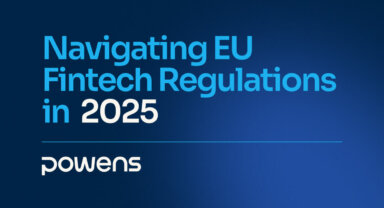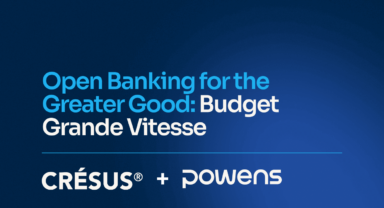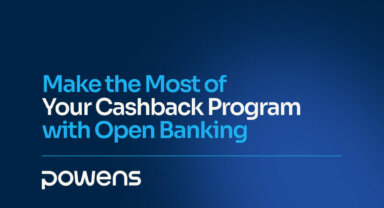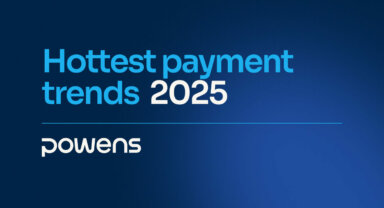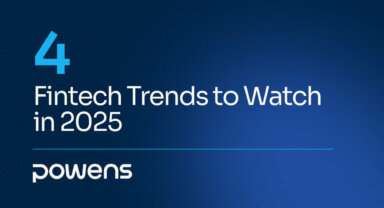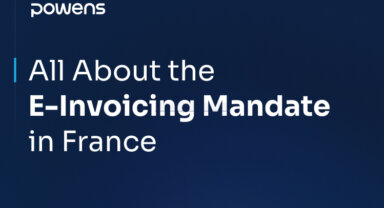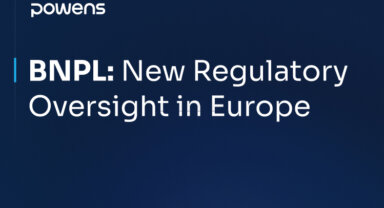How we’ve helped fuel the transition from Open Banking to Open Finance
A lot happens in the span of 10 years. When we first opened our doors in 2012, no one was talking about Open Banking. It was actually us who got that conversation started. We felt there was an opportunity to harness the power of tech to innovate, improve, and ultimately transform the banking and financial services industries.
By disrupting the market, we became one of the catalysts for some of the PSD2 regulations—along with the e-money directive—which, together, helped give rise to neo-banks and all sorts of other user-friendly tools and applications that consumers rely on today to open, manage, and pay from a bank (checking) account.
In spite of the incredible innovation that has emerged from the Open Banking movement, it, unfortunately, has its own limits, too. After all, there’s only so much you can do to improve the experience for your customers when existing regulations only provide guidance on how to leverage checking account information. This is why we’re now taking everything we learned from blazing the trail with Open Banking to build, grow, and evolve the Open Finance future. Keep reading to learn more about why this should be top-of-mind for all businesses today.
From Open Banking to Open Finance: Is it really a transition?
As humans, we’ve been taught that pretty much everything in life has a beginning, a middle, and an end. That may be true in many cases. However, what is often identified as the shift from Open Banking to Open Finance has, at least for us, always been more of a parallel path.
That’s because the underlying logic for both Open Banking and Open Finance is essentially the same. Where they are different, however, comes down to two key factors:
- What kind of data businesses are able to get access to for unlocking new innovations; and
- What regulations are in place to safeguard that transfer of data.
As a bit of history, when we first dove head-first into Open Banking 10 years ago, there were absolutely no regulations in place. We were essentially building the ship as it was sailing—and, as a result, this gave us a seat at the table to work with legislators and other government bodies to establish some of the data privacy and payment services regulations that exist today.
Unfortunately, many of the regulations that were created had a very limited scope. True, the PSD2 regulation established some necessary guardrails for Open Banking, especially around enabling a wider variety of payment services at much lower costs to consumers. But those directives had absolutely nothing to do with the Open Finance initiatives that we were already working on. Fast forward to today, those regulations still have yet to catch up, even though the right conversations are now finally happening.
So, when looking at this from a purely regulatory standpoint, there’s no question that a gradual transition from Open Banking to Open Finance has taken place. And we firmly believe that the work done thus far will further fuel the inevitable transition to Open Data as well. But in practice, Open Finance itself isn’t a new concept. It just hasn’t been fully regulated yet.
We believe that people should be the owners of their own data
Speaking of regulations, here’s something we’ve always known and felt to be true as we’ve paved the road toward Open Finance: People should be the owners of their data. They should be able to access it whenever they want or need it just as much as they should be able to determine who can access it as well as how it can be used on their behalf. Making data “mobile” is truly the key to creating better products and services that can make consumers’ lives better.
The relationship that people have with data, both literally and figuratively, is much different today than when “big data” was still a relatively unknown (and slightly feared) concept. But as more streamlined financial products and services, all fueled by data, have entered the market over the years—as well as extensions of those solutions that reach well beyond financial services alone—it has become easier for people to see the value of their data in action. Knowing that access to data can lead to innovations that create more ease, simplicity, personalization, etc. around daily life, sharing becomes a no-brainer and is, therefore, perceived as less risky.
People can now wield their own data to unlock endless possibilities—if they choose to do so. And while there may still be some fear around data security (for obvious reasons), people are much less reluctant to share their data today because they know they’ll get something out of it.
Fortunately, regulations like GDPR and PSD2—especially with the introduction of Strong Customer Authentication (SCA)—have helped strike the right balance between security and innovation across the industry as a whole. These made it crystal clear that personal data is the sole property of the individual and, as a result, should be protected accordingly. This has enabled people to now have direct control over how their data can (or can not) be shared. From a data privacy perspective, this is a big win in terms of reassurance.
However, it also managed to ruffle a few feathers, especially among traditional banks. Why? Because all of a sudden they could no longer act as “walled gardens” of their customers’ data. If customers want their data to be shared with third-party providers in order to take advantage of premium products and services not provided by their banks, the banks have to comply.
The real shift: From a monopoly to a competitive landscape
To be honest, the transition that we should really be talking about is how the open data revolution, generally speaking, has disrupted (and broken) the data monopoly that banks have had over financial services for years. Much less at a time when access to customer data has essentially become table stakes for maintaining a competitive edge in the market. The good news: Out of this has come an increasingly competitive, innovative, and forward-thinking landscape that’s focused on consumers and businesses more than ever before.
Now, this is not to suggest that the traditional banking model is becoming obsolete anytime soon. However, as new data-driven and tech-first financial players have entered the market in growing numbers, they’ve forced traditional banks to re-think their business model in order to become more agile and customer-centric. Not to mention, this has brought prices down, too.
But this has also put banks in a precarious place. They don’t want to be disrupted. They don’t want to lose direct contact with their customers. They don’t want to lower their prices. In spite of their reluctance to change, many banks have quickly learned that they must adapt and evolve based on what their customers expect from them. Today, they have a choice: Do they continue with the status quo—because they know there will always be a place for traditional banks in the financial services ecosystem—or do they follow the lead of other fintech companies and invest in innovation to stay competitive? (This was rhetorical, there’s obviously no choice here.)
Consumers don’t have the time or patience to deal with cumbersome processes. They want to do everything digitally now, from uploading documents to sharing bank details to making payments. While simple digital workflows like this may have been a novelty even a few years ago, they’re more or less table stakes of customer experience today. Simply put, not providing streamlined services like these is a great way to lose customers—and fast.
And while many banks may use “security” as a messaging tactic to keep their customers from jumping ship, we’ll clue you into a little secret: Traditional banks are no more secure than any fintech player in the Open Banking movement. All parties are governed by the same regulations and payment directives. Those alone have leveled the playing field entirely.
Why has it taken so long for Open Finance to go mainstream?
You would think that, with increased competition and technology evolving at a rapid pace, the Open Finance movement would have been a bit further along by now. Unfortunately, innovation often comes with its own headwinds—and Open Finance is no exception to this rule. Here are three things that have slowed it down:
1. Fragmented scope of current regulations
As mentioned before, the PSD2 regulations only deal with payment services and, therefore, only govern the sharing of data tied to an individual’s checking account (because people don’t pay with savings accounts). But a checking account is only one piece of a person’s entire financial picture—and by no means is it a good indicator of someone’s net worth.
What complicates this even further is that there is an entirely different set of regulations (like MiFID) that govern investment services, including how wealth is disclosed, how risk is rated, how to inform the customer about risks, and so on. These regulations don’t sync up with payment services directives whatsoever, which makes it that much harder to create unified standards applicable to Open Finance as a whole.
Obviously, this creates a huge opportunity to change the aim of current regulations to expand beyond payments and into investments as well. While this doesn’t seem likely to happen in the next update to regulations—at least, for anything beyond checking and savings accounts—there is work underway to standardize what this next phase of regulations should look like.
2. Different levels of risk when sharing investment-related data
It’s one thing to share checking account data, which may include, for the average person, up to tens of thousands of euros. It’s another thing to share investment data, especially for high-net-worth individuals who, for many reasons, might not want their total wealth to be easily accessible by governmental bodies. This becomes even more complicated when wealth is distributed across multiple countries, currencies, and tax laws. So while many people see the value in making this kind of data accessible—in order to take advantage of innovative products and services—there is a higher level of risk that needs to be mitigated with better regulations.
3. Additional investment required by banks
Believe it or not, the IT infrastructure that handles checking accounts is often quite different than what supports other banking products (including savings accounts). This is a technological hurdle to overcome on its own. But that’s not the real issue. Sharing investment account data in the same way that checking account data is shared would most likely double or triple the cost of building an API to do that—and very few banks and financial institutions are eager to make any kind of investment (on their own) that could very well lead to additional customer attrition.
That being said, they could easily monetize these kinds of investments by having customers offset the costs, but that’s only likely to work if the APIs they build are clean and the customer experience created by it is great. Otherwise, it could be an uphill battle. Either way, this begs the question: If the API is being monetized, is it still truly “open” in nature? (The jury’s still out…)
Two big reasons why Open Finance matters
While there are a lot of specific benefits and use cases for Open Finance that we can dig into, for the purposes of this article, here’s why we believe Open Finance is the future:
- It encourages competition: Up until about 10 years ago, traditional banks held customers—and their data—hostage. But that should never have been the case. Banks don’t own customer data, including transaction details and account balances. That information is the sole property of the customer. What banks own is the infrastructure and processes that allow customers to tap into their banking services. However, in the absence of any competition, banks have had absolutely no reason to change or loosen the reins on the customer data that they once had uniquely in their possession.
Fortunately, the Open Banking and Open Finance movements have since put pressure on the entire financial services industry to be better—and to be more customer-centric. This has led to a significant increase in competition and, as a result, much lower prices. - It fuels innovation: Similarly, with increased competition comes new innovation. The ultimate goal of Open Finance is to empower businesses to create better products, services, and solutions that give consumers or companies greater visibility around their entire financial situation. Part of this is all about real-time ease and convenience. Another part is about fostering long-term customer value. Achieving both sides of this innovation equation is only possible when you’ve got access to the right data.
As you can see, Open Banking, as a solution for every day or short-term finance, has paved the way for Open Finance to bring the same level of innovation to long-term finance (and beyond) in the future. What’s important to note is that Open Finance is already here. We’ve been building it for the last 10 years. It’s just a matter of time until regulations keep up.
Until then, we’ll continue pushing the boundaries of Open Finance to unlock new value for customers and spark innovation that keeps the financial services industry competitive.
Discover the key figures of Open Finance, as well as the 5 most inspiring use cases!
Read our white paper now.

 Nov 16, 2022
Nov 16, 2022 



